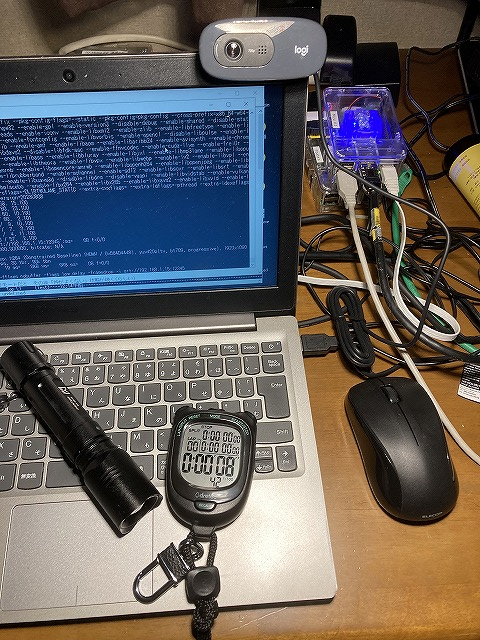どなかた、現在「マークスの山」を見れるサイトをご存知でしたら、教えて下さい ―― 本を読むのを止めてご連絡を待っています。
今なら、Amazon Primeで見れます。
Now, you can watch it on Amazon Prime.
以下に、ネタばれをします。
The following is a spoiler.
面白かった。「レディジョーカー」に匹敵する面白さだった。
It was fun. It was as enjoyable as "Lady Joker."
嫁さんに話したら、昨夜、一気見してしまったようです。
I told my wife about it, and she watched it in one sitting last night.
-----
以前、「マークスの山」が辛い、という話を書きましたが、ドラマ見ていて、その理由が分かってきました。
I have written before about how "Mark's Mountain" is challenging, and after watching the drama, I now understand why.
登場人物が多い。これですね。
There are many characters. This is it.
私の脳のキャパを越える人数が登場すると、もうダメのようです。
When more people appear than my brain can handle, I will give up soon.
「三国志」なんかは、もう酷いです。500人以上が登場するらしいです。
The "Three Kingdoms" is so bad that it has more than 500 characters.
ドラマ"The Three Kingdoms"がなければ、私は、一生、三国志は理解できないままだったでしょう。
Without the drama "The Three Kingdoms," I would have never understood the Three Kingdoms for the rest of my life.
-----
小説でも、人物関係図を図解・・・とは言わないまでも、ディレクリ(ツリー)構造で表示してくれると助かるのですけどね。
It would be helpful if novels could also display a character relationship chart in a directory (tree) structure, not to say a diagram...
「マークスの山」なら、
If it's "Mark's Mountain."
「いいやつ」、「わるいやつ」、「わるいやつだけどいいやつ」というツリーの下に、「検察」「警察」「法曹」「マスコミ」「大学」「民間人」という分類を入れてもらえれば、随分助かります。
It would help a lot if you could include the categories "prosecutors," "police," "legal professionals," "universities," and "civilians" under the "good guys," "bad guys," and "bad guys but good guys" trees.
まあ、読書家の方から見れば、興醒めも甚しいとは思いますが、システムのエンジニアは、オブジェクト指向というか、オブジェクト思考であり、オブジェクト嗜好でもありますので。
Well, from the point of view of the reading public, this may not be very interesting, but systems engineers are object-oriented, object-thinking, and object-preferring.
それと、「暁成大学」などと書かずに、最初から、ズバリ「東京大学」と書いて欲しい。
Also, please write "University of Tokyo" instead of "Gyosei University.
と嫁さんに言ったら、
When I told my wife, she said
―― そんなもん、誰が見たって明らかじゃん
"It's obvious to anyone who reads or watches."
と、言われてしまいました。
でも「誰が見たって明らか」ならば、「明らかな方」で記載して貰った方が、脳のキャパが少ない私には、助かるのですが。
But if it is "obvious to everyone," it would be more helpful to me, with my limited brain capacity, if it were described by "the obvious one."
------
こちらに記載していますが、芝村裕吏さんは、日本でロボット兵器を開発している(というフィクションを置いているのは)のは、"三菱"と"日立"である、と記載しています。
As noted here, Yuji Shibamura states that "Mitsubishi" and "Hitachi" are the only two companies in Japan that are developing robotic weapons (as a fiction).
"iイルミネータ"の開発は、"東芝"(?)に持っていかれましたが、これも日立に担当させて貰いたかった。
The development of the "i-illuminator" was taken over by "Toshiba"(?). I would have liked Hitachi to be in charge of developing the "i-illuminator.
私に言わせれば、"三菱"も"日立"も"東芝"も、そういう兵器開発をやっていないことは、
I would like to point out that neither Mitsubishi, Hitachi nor Toshiba is engaged in such weapons development, like
―― そんなもん、誰が見たって明らかじゃん
"It's obvious to anyone who reads or watches."
って、思うんですけどね。
うん、技術的に無理。難しすぎる。
Yeah, it's technically impossible. It's too complicated.
でも、そう思わない人もいるかもしれないなぁ、とは思っています。
But I do wonder if there might be some who don't think so.
-----
本日の結論は、「『マークスの山』を楽しみたいなら、今なら、Amazon Primeで見れます」となります。
Today concludes that if you want to enjoy "Mark's Mountain," you can now watch it on Amazon Prime.




